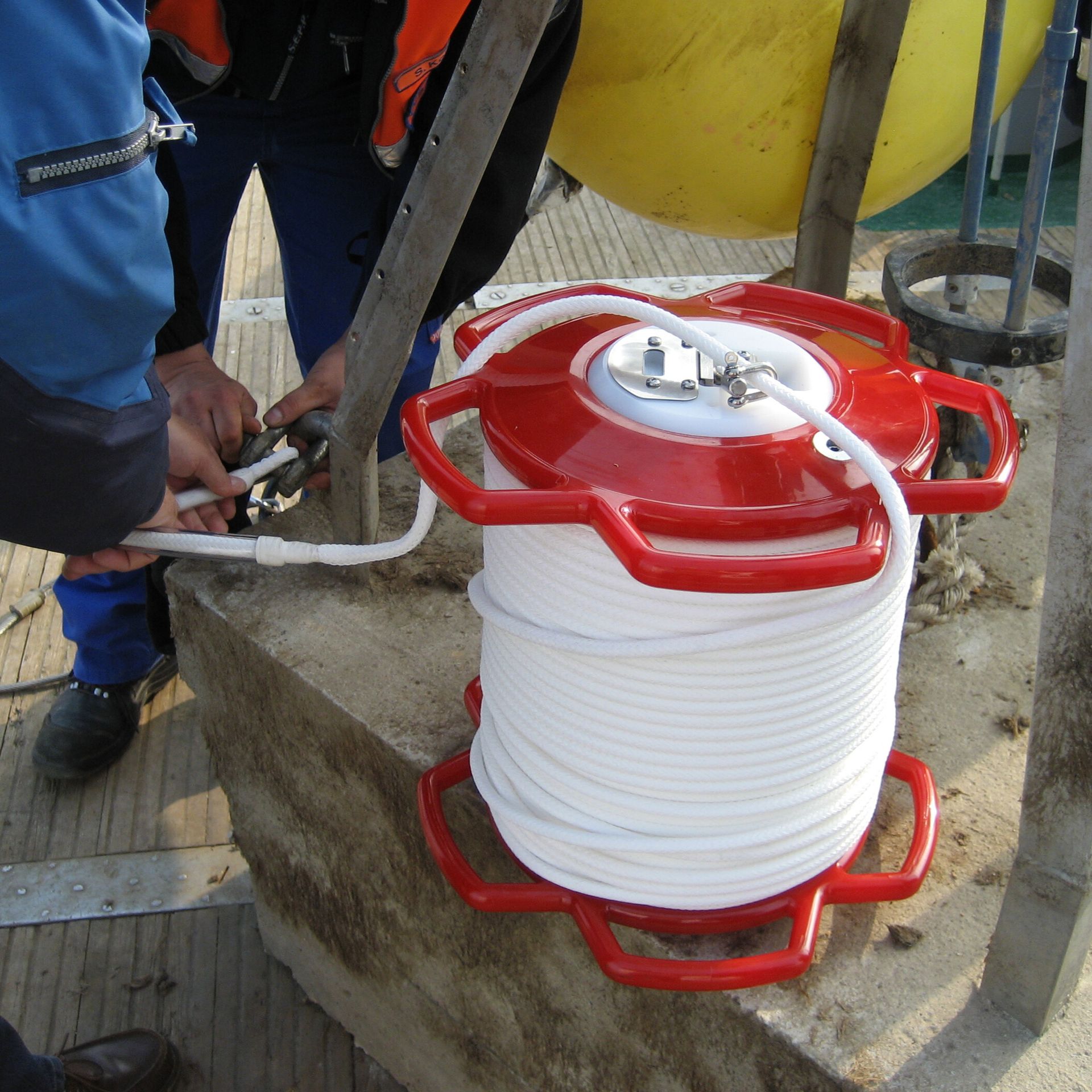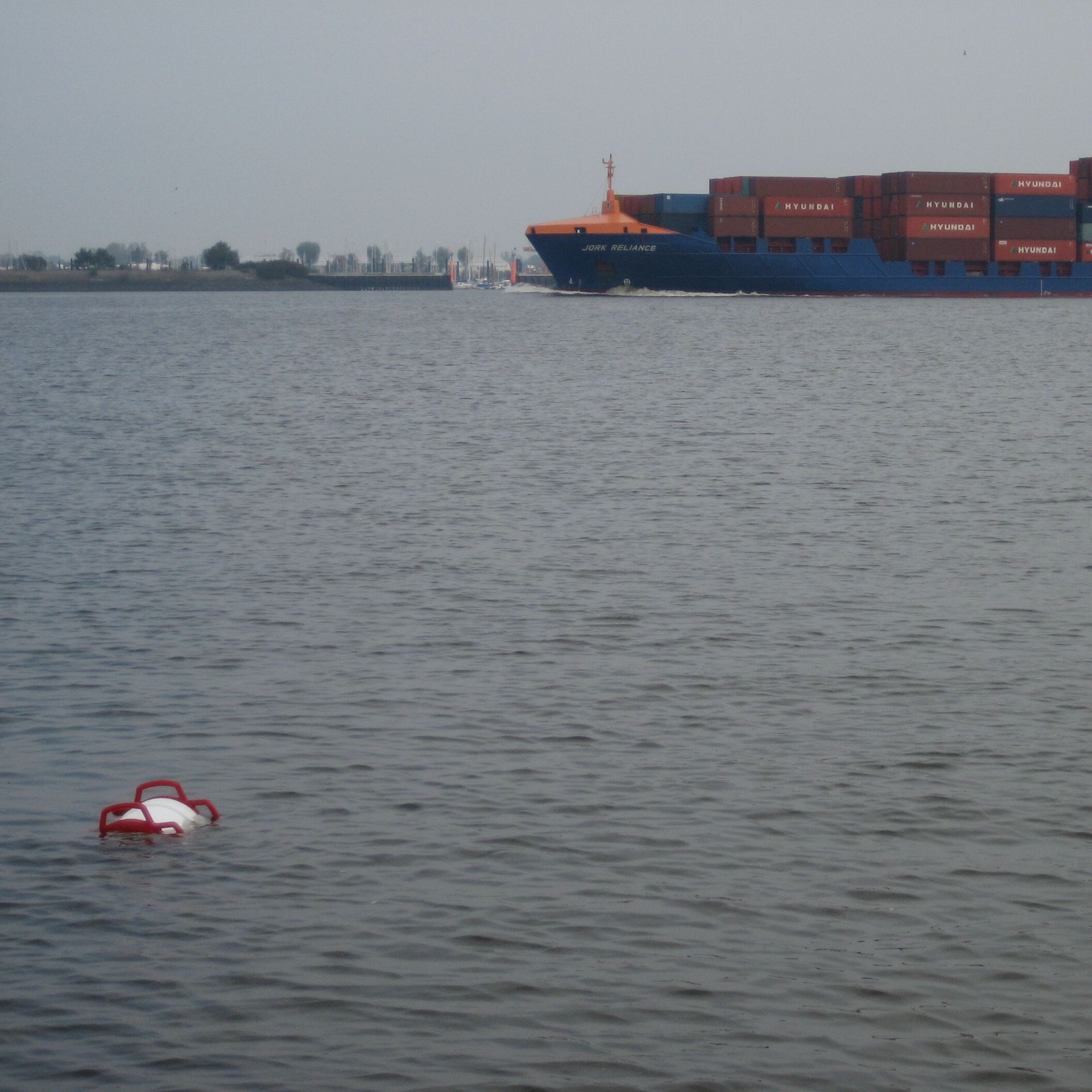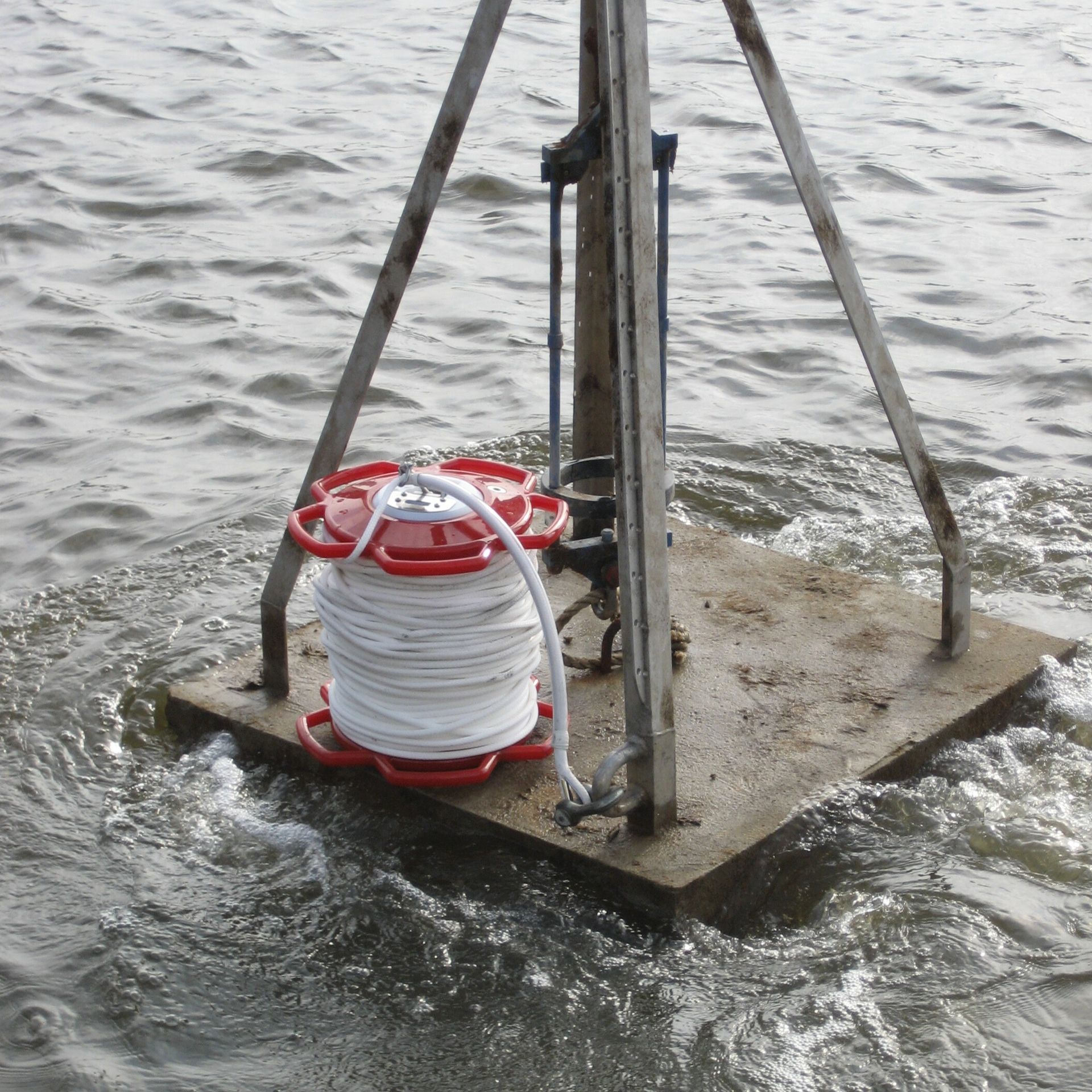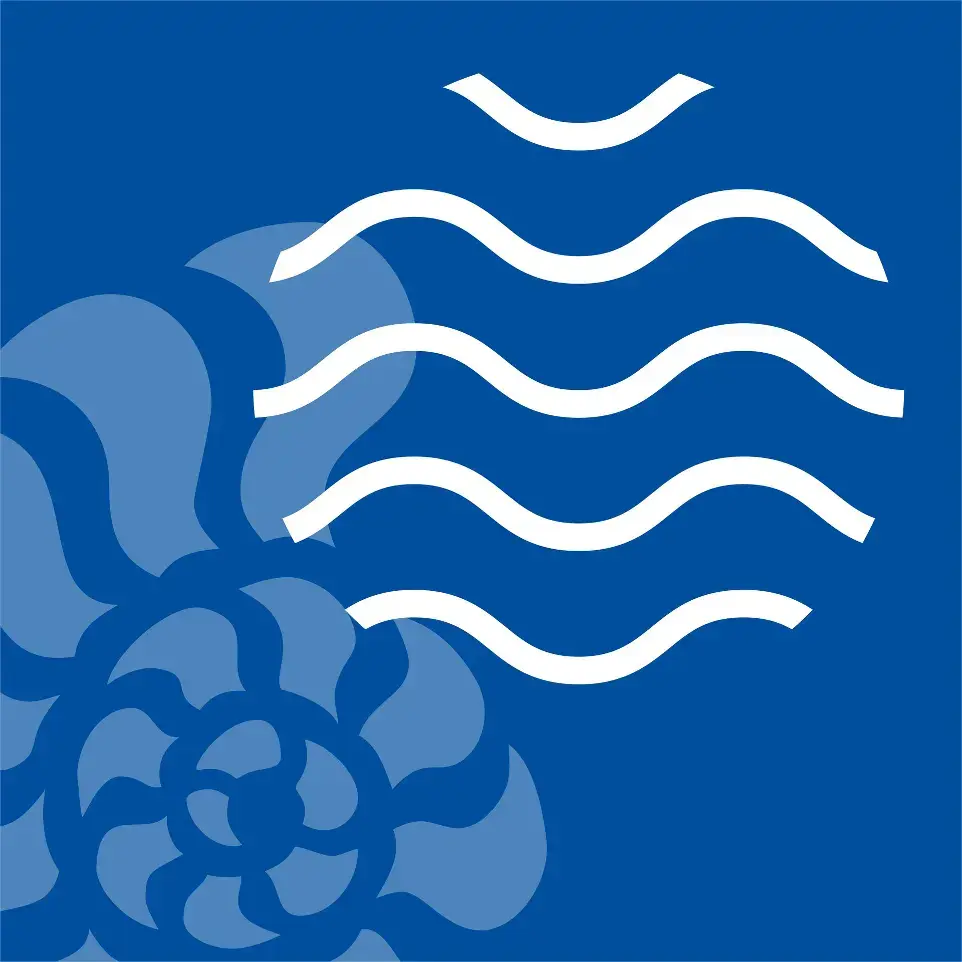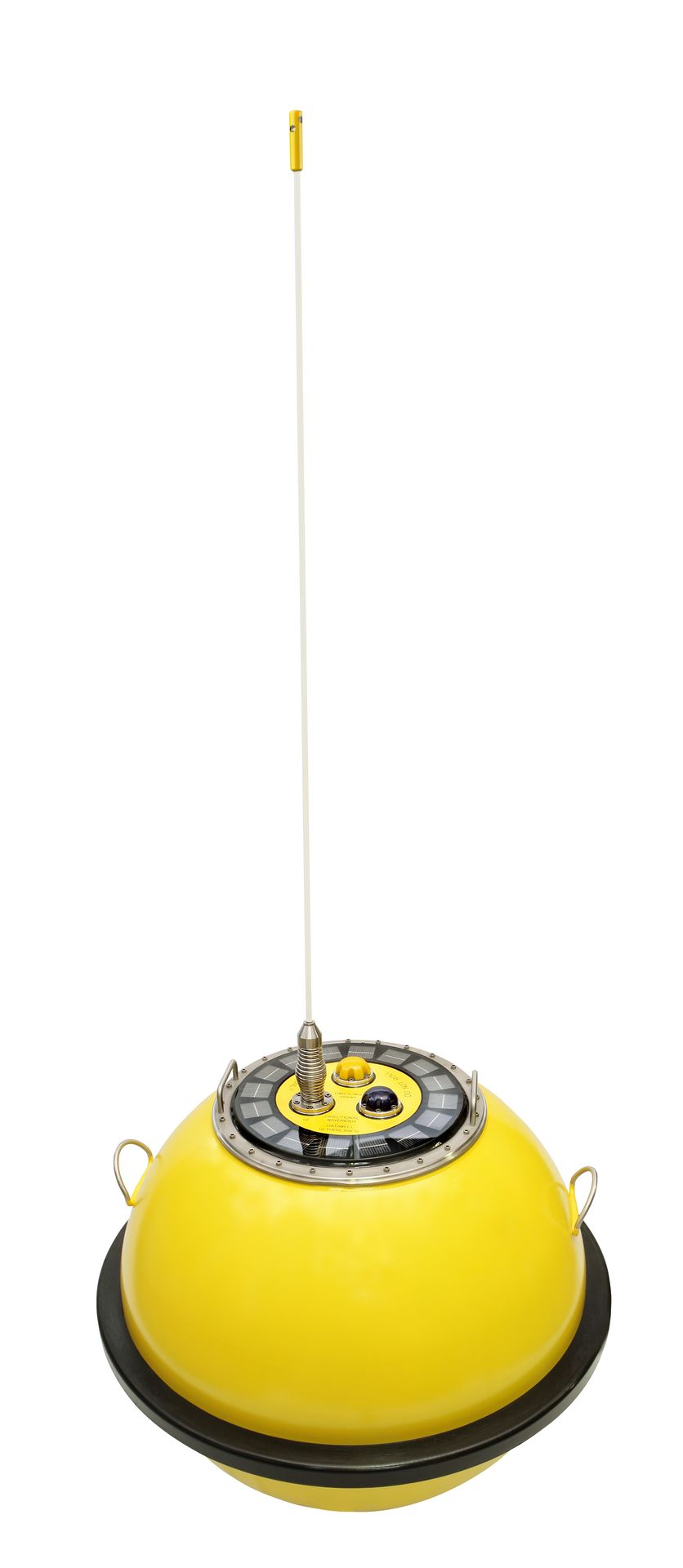 Wave measurement buoys
Wave measurement buoys
Wave measurement buoys are specialized instruments designed to measure ocean waves in real time and collect important data about their characteristics. These buoys play a crucial role in oceanography and marine weather forecasting, as they provide information that is highly valuable for various applications.
Operating principle
1. Wave height: The buoys measure the amplitude of the waves, which is the vertical distance between the highest point (wave crest) and the lowest point (wave trough) of a wave. This information is crucial for shipping, coastal protection, and offshore activities.
2. Wave period: The time it takes for a single wave to travel from one point to the next is called the wave period. It is an important parameter for characterizing wave motion and directly influences the energy transported by the waves.
3. Wave direction: The direction from which the waves originate is important for various applications, such as ship navigation or the planning of offshore construction projects.
4. Water temperature: Some wave measurement buoys also record the temperature of the surrounding water. This is important for better understanding the interactions between ocean waves and the atmosphere and for monitoring environmental impacts.
5. Real-Time Data Transmission:
Many wave buoys transmit collected data in real time via satellite links to meteorological and oceanographic centers. This information is crucial for generating accurate weather forecasts, monitoring coastal areas, planning offshore operations, and operating tsunami warning systems.
Wave measurement buoys also play a crucial role in the preliminary survey and monitoring of sites for offshore wind farms. The installation of wind turbines in the open sea requires a thorough analysis of marine conditions. Wave measurement buoys provide accurate data on wave height, period, and direction to ensure that the site is suitable for wind turbines and meets the necessary safety standards.
Multiparameter Spotter Buoy
The Multiparameter Spotter Buoy is a modular, rapidly deployable measurement platform that delivers precise, real-time data from the sea surface and the immediate subsurface. It is designed to simplify access to marine environmental data, enhance safety during offshore operations, and support the development of coastal and ocean observation networks.
The buoy continuously measures wave spectra, derived wind data, sea surface temperature, and atmospheric pressure, transmitting all parameters in real time via satellite or cellular networks. Thanks to its solar power system, the buoy operates autonomously and reliably, even in extreme environments ranging from polar ice to intense heat.
Its range of applications is broad: the Multiparameter Spotter Buoy can be deployed as a free-drifting unit, moored in place using conventional anchoring systems, or expanded with additional underwater sensors via Smart Mooring. This flexibility makes it suitable for both short-term missions and long-term monitoring programs.
A key feature of the buoy is direct data access. All measurements are available in real time through an intuitive dashboard and API, enabling informed decision-making, improving offshore safety, and increasing operational and planning efficiency.
Moreover, the Multiparameter Spotter Buoy stands out for its scalability. Compared to traditional platforms, it offers significantly lower overall operating costs and enables the easy deployment of dense sensor networks across wide areas.
This makes it a forward-looking solution for anyone in need of robust, precise, and immediately accessible ocean and weather data from research institutions and coastal protection initiatives to industrial offshore operations.
Pop-up Buoys
Deploying hydrological measuring instruments permanently on the sea or lake floor always presents the challenge of locating, recovering, and securing the valuable equipment and the data it contains.
The simplest method of marking with a buoy is not always the best: instruments cannot be secured this way in busy areas, they may be displaced during bad weather, and they are visible and noticeable to everyone on the water. The Fiobuoys from the company Fiomarine address this challenge with their impressively simple concept.
Operating principle
A specific time and trigger date are programmed into the Fiobuoy using the handheld control device. For the Fiobuoy AC100 and AC200 models, additional operating parameters can be entered. Note: A time and date must be programmed for the entire Fiobuoy series. For the Fiobuoy AC100 and AC200 models, this serves as a backup function and ensures increased reliability.
The Fiobuoy is attached to an anchor and/or equipment, lowered into the water, and remains underwater for the duration of the deployment. It sits vertically underwater, held by the primary line. This line is connected to a release pin, which is securely held by the closed "jaws" of Fiomarine’s patented release mechanism. The integrated acoustic transducer is directed upward toward the water surface to receive your acoustic commands.
3. The Release Event: At a pre-set time or upon receiving an acoustic command, the release mechanism in the Fiobuoy is activated. The jaw opens, releasing the pin and freeing the Fiobuoy from its primary tether. It immediately assumes a horizontal orientation and begins to unspool slowly. The Fiobuoy has been deliberately designed to unspool gradually to prevent the line from tangling.
4. Surfacing and Recovery: The Fiobuoy rises to the surface due to its positive buoyancy while continuing to unspool. It remains connected to your anchor and/or underwater equipment. Recovery of the Fiobuoy, including any attached instruments or anchors, is possible as soon as it reaches the surface. For operations at night or in poor visibility, the Fiobuoy can also be equipped with a flashing light.
5. Redeployment: Redeploying the Fiobuoy is equally simple and can be done within minutes of recovery. Just rewind the tether and program a new release time/date – your Fiobuoy is then ready for its next deployment. Fiomarine also offers a range of tether rewinders to speed up this process.
